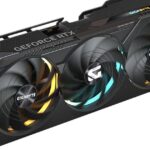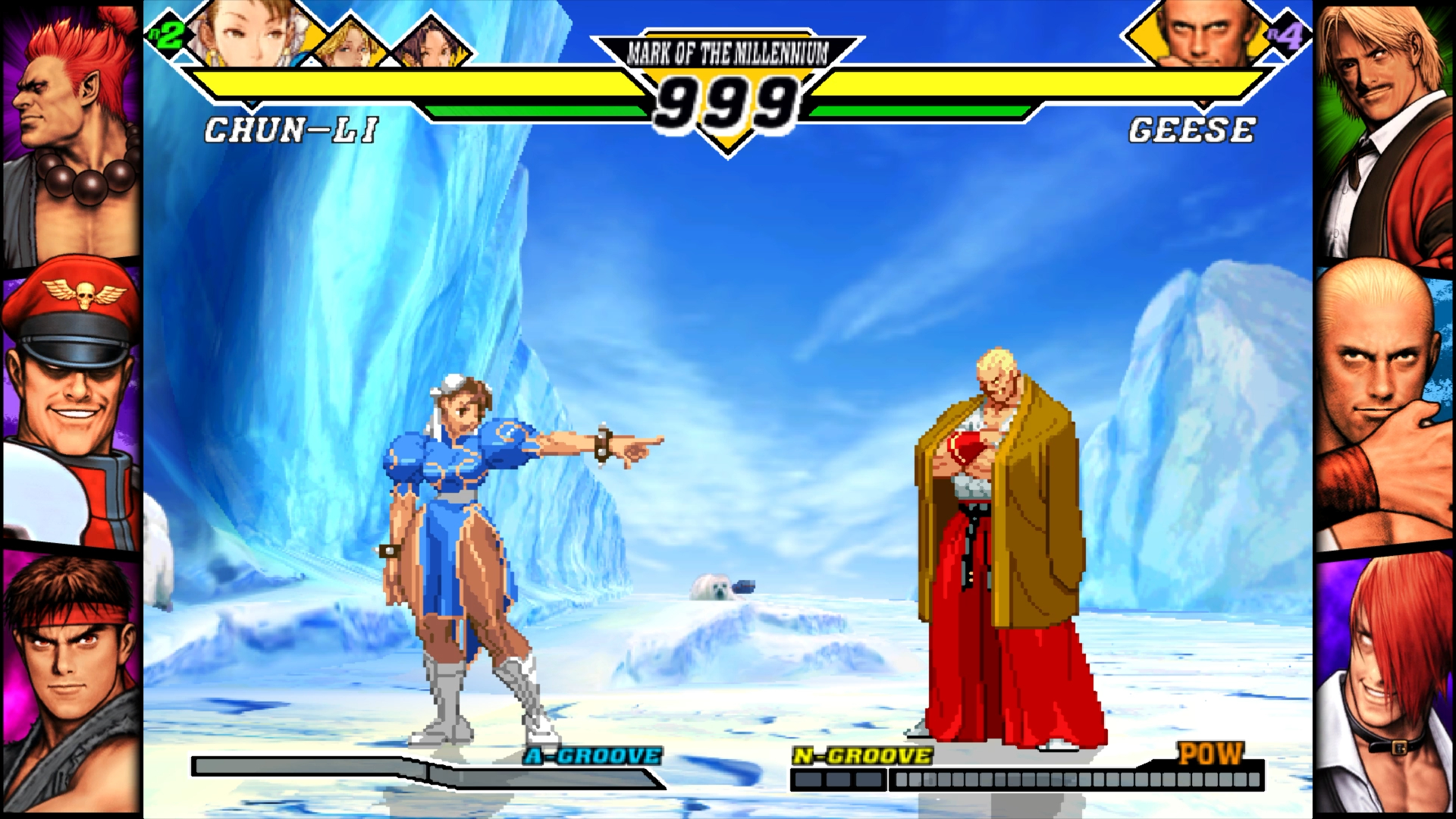Why you can trust TechRadar
We spend hours testing every product or service we review, so you can be sure you’re buying the best. Find out more about how we test.
Capcom has been on a tear with its compilations recently, and now Capcom Fighting Collection 2 has arrived hot on the heels of the also-excellent Marvel vs. Capcom Fighting Collection: Arcade Classics.
Review information
Platform reviewed: PC
Available on: PS4, Nintendo Switch, Xbox One, PC
Release date: May 16, 2025
What makes Capcom Fighting Collection 2 extra special is its diversity. The first Capcom Fighting Collection was very Darkstalkers/Vampire Savior flavored. This latest compilation, however, manages to deliver something for everyone, with some games that fans have been pining to have re-released on modern platforms for years now.
The big draw in this collection is, of course, Capcom vs. SNK 2: Mark of the Millennium 2001. Fighting game legends and casuals alike largely consider it to be one of the greatest the genre has ever seen – owing to its large crossover roster, exceptional soundtrack, and the innovative Groove system.
But that’s not to say the rest of the collection is a dud. You absolutely shouldn’t sleep on the original Capcom vs. SNK and its glorious presentation, nor 3D curiosities like Project Justice and Plasma Sword: Nightmare of Bilstein. Both Power Stone games are here, too, and those are among the best party platforming fighters of all time.
The only real stinker in Capcom Fighting Collection 2 is Capcom Fighting Evolution. It’s a bizarre inclusion given its infamous reputation, confusing systems, and roughshod presentation. On the other hand, it’s an interesting one from a curiosity standpoint, and it is still worthy of preservation.
You can also expect the usual smattering of extras, including concept art galleries, achievements, and sound test options. Some games also have fully remixed soundtracks courtesy of the CAP-JAMs team, and there’s plenty of bangers here, especially for Capcom vs. SNK 2.
Go for broke
Before diving into the review proper, here’s a quick rundown of the eight games you can expect to play in Capcom Fighting Collection 2.
- Capcom vs. SNK: Millennium Fight 2000 Pro
- Capcom vs. SNK 2: Mark of the Millennium 2001
- Street Fighter Alpha 3 Upper
- Project Justice
- Plasma Sword: Nightmare of Bilstein
- Power Stone
- Power Stone 2
- Capcom Fighting Evolution
I won’t be giving a full review of each game individually, as to be quite honest, I’d need around 5,000 words to do so. But what you should know is that – aside from Capcom Fighting Evolution – each game in this collection is absolutely worth playing, whether you’ve done the rounds with fighting games before or not.
For most players, the first port of call will almost certainly be Capcom vs. SNK 2: Mark of the Millennium 2001. What seems like a simple crossover fighter on its surface quickly reveals itself as perhaps one of the deepest fighting games ever made. And it’s all thanks to the Ratio and Groove systems.
First of all, Ratio determines the power scaling of the character(s) you select. You have four Ratio points with which to build your team, with higher numbers granting your characters more health and attack strength. For example, you can pick a single Ratio 4 character, or one Ratio 2 and two Ratio 1 fighters.
The Groove system is vastly more complex and will fundamentally change how your team operates. There are six grooves: C, A, P, S, N, and K. Each can apply different properties and abilities, but there are unique quirks within each. C-Groove, for example, is the only Groove that grants you access to Level 2 Super moves. P-Groove gives you a Street Fighter 3: Third Strike-style parry, while K-Groove lets you enter a powered-up rage state. You can only select one Groove, and learning which you like best (not to mention which works best with your chosen characters) is an incredibly rewarding process for those willing to put the time in.
The original Capcom vs. SNK may not be as fondly remembered, but skip on it at your peril. It arguably has the stronger presentation of the two, with charming stage intro animations and one of the slickest attract screens to ever grace the arcades. There are some limitations here compared to its sequel, though. Characters have a preset Ratio, for one, and there are just two Grooves to choose from (either Capcom or SNK). It’s still well worth checking out, though, if only for its mesmerizing Y2K-style presentation.
Party on
If you prefer more casual-friendly 3D fighters, this collection has you covered there, too, in the forms of Project Justice and Plasma Sword. The former is a team-based fighter that pits characters from rivaling high schools against each other, making use of powerful team synergy attacks to quickly turn the tables.
The latter is an interesting one; Plasma Sword (and its predecessor, Star Gladiator) was, allegedly, originally envisioned as a Star Wars fighting game. You’ll be able to see that influence in many of its character designs, too. A four-button fighter not dissimilar to the Soul Calibur games, it’s not the most complex game out there, but it is well worth experiencing for its lighthearted sci-fi charm and bonkers special moves.
Best bit
The crown jewel of the package is undoubtedly Capcom vs. SNK 2. It’s a highly technical fighting game, but certainly one of the most rewarding to this day. Fine-tuning your team and matching them with one of six Groove styles is incredibly satisfying, if only to see what kinds of crazy synergies you can come up with. It truly feels like a game of limitless possibilities, and I can only hope Capcom and SNK revisit the concept in the future.
Then you have Power Stone and Power Stone 2, both of which are a real treat and – for those who prefer less technical fighters that flourish in casual multiplayer environments – perhaps the best games in this collection. The Power Stone games combine melee fighting with a range of fun items, including gatling guns, lasers, and hammers. Both are an unbelievably fun time despite their age, with a cast of charming characters, a lovely art style, and stages that evolve over time. Power Stone 2 does bump things up from two players to four and features all-new stages. But you can’t go wrong with either title, really.
Rounding out the package is Street Fighter Alpha 3 Upper, a fantastic arcade version of Alpha 3 with balance changes and extra characters. Then there’s Capcom Fighting Evolution, which – to be polite – is the black sheep of the collection. It’s one you can safely skip due to its frankly horrible presentation, with muddy low-resolution backgrounds and a grossly unbalanced roster.
It’s a curiosity for sure, as a game that chucks in characters from Street Fighter, Darkstalkers, Red Earth, and more, but also one that simply isn’t as fun or rewarding as the other titles in Capcom Fighting Collection 2.
Buy it if…
Don’t buy it if…
Accessibility
Capcom Fighting Collection 2 does have a couple of noteworthy accessibility options. One-button supers apply to most games here, letting you input your favorite characters’ flashiest and most damaging moves with little effort – perfect for casual and beginner play. You can also access various CRT filters or disable them entirely based on your preferences.
I played Capcom Fighting Collection 2 for 15 hours on a gaming PC, via Steam. I primarily played with my Razer Wolverine V3 Pro controller, but also switched to the Hori Fighting Stick Alpha for a bit to confirm the game’s compatibility with the best fight sticks.
First reviewed May 2025
Read the full article here















